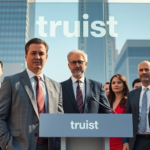Sealed Air’s $6.2 Billion Private Equity Takeover: A Regional Shift with National Implications
On November 17, 2025, Sealed Air, a prominent player in the food and protective packaging industry, announced an agreement to be acquired by private equity firm Clayton, Dubilier & Rice (CD&R) for $6.2 billion. The deal, valued at $42.15 per share in cash, positions Sealed Air with a total enterprise value of $10.3 billion, marking a significant pivot for the North Carolina-based company which has been navigating economic and industry challenges.
Landmark Deal with Contingencies
This acquisition deal has won the approval of Sealed Air’s board and is projected to close by mid-2026, pending necessary regulatory and shareholder endorsements. Following the transaction, the company will delist from the New York Stock Exchange and transition from a publicly traded company to a private entity. An important feature of the acquisition agreement is a 30-day “go-shop” period, granting Sealed Air the liberty to seek alternative acquisition proposals until December 16, 2025.
In case of a superior offer during this period, Sealed Air is bound to a $94.67 million termination fee payable to CD&R, should the board decide to pivot. Conversely, CD&R has provisions to offset a fee should they retract for specified reasons, ensuring a structured exit for both parties if needed.
Economic Pressures and Strategic Shifts
The acquisition comes at a time when Sealed Air finds itself under considerable economic pressure. The company has been adversely affected by fluctuations in beef production and evolving trends in e-commerce packaging, which have impacted sales. To counter these challenges, Sealed Air has embarked on a multiyear transformation journey since 2023, encompassing strategic refocus and leadership changes. In 2024, the company reported $5.4 billion in sales, underpinned by its significant workforce of 16,400 employees globally.
Local analyst and packaging industry expert, Teresa Mendoza, notes, “Sealed Air’s struggle with fluctuating demand dynamics reflects wider industry trends. The acquisition by CD&R could offer the necessary capital influx and strategic redirection collective to rejuvenate Sealed Air’s market presence.”
Impact on the Community and Workforce
The impending change in ownership poses substantial implications for the community, particularly in regions where Sealed Air maintains significant operations. Despite the corporate transformation ahead, the partnership with CD&R is anticipated to boost the company’s investment capabilities, primarily in its Food and Protective packaging businesses, potentially safeguarding the jobs of 16,400 employees.
Rebecca Sanchez, who works at one of Sealed Air’s facilities, expressed a blend of hope and uncertainty among her colleagues. “We’re hopeful that the transition will bring about positive changes and boost job security in the long run, but naturally, there’s apprehension about what becoming a private company means for worker interests,” she stated.
Community Perspectives and Future Implications
As this deal unfolds, community members and local economy stakeholders are keenly observing its implications. Previous transactions within the packaging sector, such as CD&R’s acquisition of Veritiv for $2.6 billion in 2023 and the more recent $6.7 billion acquisition of Pactiv Evergreen by Apollo-backed Novolex, all hint at increasing momentum for mergers and acquisitions driven by private equity in this space.
By remaining intact rather than splitting its assets, as suggested by some analyst speculation, Sealed Air, under CD&R’s stewardship, aims to stabilize while potentially accelerating growth and innovation. RBC and Truist analysts had earlier indicated the potential benefits of asset divisions, but at this juncture, the chosen path reflects a commitment to unity and comprehensive strategic advancement.
Michael Rodriguez, a business consultant focused on regional economic development, highlighted the transformative potential of this acquisition for Sealed Air. “While it is crucial for community members to remain informed and proactive, these changes offer a chance to strengthen regional economic resilience if executed with foresight,” he commented.
Conclusion and Next Steps
The acquisition of Sealed Air by CD&R reveals broader trends in the industrial sector, where private equity firms are actively shaping market dynamics through strategic investments. As the community braces for these changes, the focus will remain on ensuring that the deal capitalizes on Sealed Air’s strengths to foster growth and stability, maintaining a proactive investment in its workforce and innovative prospects.
Residents and Sealed Air employees are encouraged to participate in upcoming forums and information sessions as the company files regulatory documents and seeks input throughout this transitional period.
The comprehensive national perspective underscores the need for strategic community involvement as Sealed Air transitions and adjusts within its new private equity environment. This acquisition narrative offers an insightful example of the complex interplay between local economic impacts and broader market trends.







